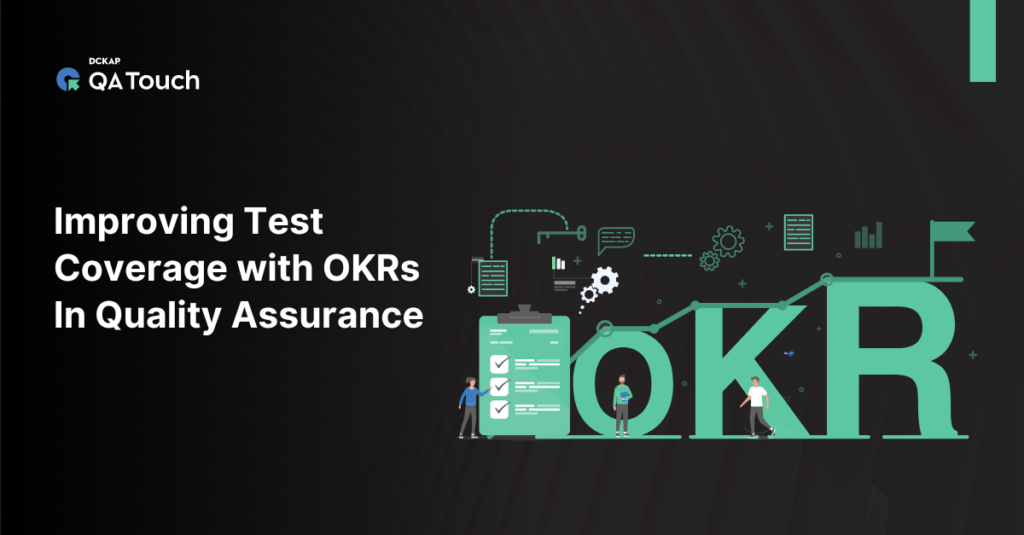In software development terms, quality assurance (QA) is the process that ensures that the software is up to standard. The only way to achieve QA is through comprehensive test coverage that essentially kicks the software’s tires to see if its features and functions meet expectations. OKRs can help in quality assurance, specifically to improve test coverage and derive actionable data from the software development process.
This structured approach ensures a shared understanding of goals and a pathway to continuous improvement in test coverage. In this blog, you can expect to gain insights into how to apply OKRs in their QA process, learn practical tips, and explore real-world examples to achieve better testing outcomes. It’s a must-read for QA professionals looking to innovate and elevate their testing strategies.
So, are you ready to elevate your test coverage? Explore the power of OKRs in Quality Assurance! Dive into proven strategies that turn goals into success.
Understanding Test Coverage in Quality Assurance
Test coverage is a metric that indicates the quantity and quality of tests conducted on a piece of software. It’s an important aspect of software quality assurance and provides a quantitative measure of what part of the application code is being covered by the test cases. It usually conducts various tests that check whether your code is bug-free and ready to launch. Test coverage must be comprehensive to detect potential issues and risks throughout your code. It typically combines manual and automated tests with various requirements that your software must meet to pass QA standards.
Introducing OKRs In Quality Assurance
Introducing OKRs in Quality Assurance is about more than just setting goals; it’s about creating a strategic alignment between QA efforts and the broader organizational objectives. By focusing on what truly matters, encouraging collaboration, and promoting a continuous improvement mindset, OKRs can lead to significant enhancements in the quality and effectiveness of the QA process. It brings clarity, direction, and a sense of purpose to the often complex and multifaceted world of quality assurance.
As the OKR framework is results-oriented, it suits test coverage processes for software quality assurance. Specific objectives and key results help developers prioritize tests, collect data, and adjust software performance. Engineering OKRs also improve QA. Here’s an overview of why OKRs can be implemented within QA:
- Identifying defective code early in development
- Building software based on defined quality metrics
- Optimizing the development process to minimize errors
- Tracking progress at every step of the testing process
Defining Effective OKRs For Test Coverage
Defining effective OKRs (Objectives and Key Results) for test coverage is a critical step toward aligning your software testing efforts with your organizational goals and enhancing overall software quality. Here’s a guide on how to go about it. QA teams can create effective OKRs using the following guidelines:
-
Identify the Most Important Software Elements Requiring Testing
Outline your software’s critical features, essential functionalities, potential vulnerabilities, and frequently updated areas. These require the most testing, so create OKRs to prioritize them.
-
Specify Objectives That Achieve Comprehensive Test Coverage
Apply the SMART principles (specific, measurable, achievable, relevant, and time-bound) when choosing engineering OKRs. This means outlining the target test coverage score, reducing defects, or improving efficiency.
-
Identify Measurable Key Results
Break down each objective into numbers, percentages, or other relevant metrics for your software to achieve. For example, identify the test coverage percentage you want to achieve, the time it will take to achieve it, etc.
-
Identify Who Is Responsible for Which OKRs
Assigning ownership is essential to implementing OKRs. Each development team member should know their responsibilities and deliverables during the testing phase. This way, everyone works toward clear, specific goals within their abilities and resources.
OKR Examples for Test Coverage in Quality Assurance
Consider the following engineering OKRs that apply to test coverage:
Objective: Achieve 100% test coverage for each critical software feature
Key results:
- Increase automated tests by 50%.
- Reduce unresolved defects by 30%.
- Score 90% and above for each critical feature
Objective: Test new features and functions
Key results:
- Create a comprehensive testing plan for each feature in pre-development
- Score 80% test coverage per new feature within 2 weeks of release
- Reduce new feature defects by 50%.
Objective: Increase test coverage efficiency
Key results:
- Automate 80% of repetitive tests in Q3
- Score 90% or higher for all features within 2 weeks of release
- Implement exploratory testing for each feature to track issues
Note that your engineering OKRs depend on your company’s particular objectives and priorities. Align your software testing efforts with business goals to ensure your software fulfills expectations.
Leveraging Automation and Test Techniques
The OKR examples above mention automation, which can significantly improve testing efficiency. Let’s look at how this and other testing techniques can boost your development process.
1. Test Automation
This involves using software to run tests, generate reports, and compare real versus expected results. Test automation allows you to run repetitive processes quickly, freeing up your time and resources to focus on manual testing strategies. You can use automation for functional tests, regression tests, and performance tests.
2. Exploratory Testing Techniques
This is a more flexible approach to software testing where you check the software’s functions as an end user. It also relies on your experience and intuition, so you will pick up potential defects that automation may miss, therefore improving test coverage results.
3. Risk-Based Testing Techniques
This involves identifying which software features and functions are most critical to business operations and then prioritizing their testing to minimize risk. These techniques combine automated and exploratory tests to achieve comprehensive test coverage.
Continuous Learning and Improvement
QA teams understand that their work is never truly done. Comprehensive test coverage is an ongoing process that requires an openness to learning and improvement. The OKR framework enables continuous learning by generating tangible results from software testing efforts, giving you concrete information to improve your outcomes. It also encourages teams to review their efforts and stay updated on the latest QA testing techniques and technologies. This way, developers can utilize the most effective testing strategies available today. With OKR, you’re not just testing; you’re conquering the future of software!
Thought Scope
Explore Success with OKRs in Quality Assurance! Align with business goals, sharpen your testing techniques, and allocate resources like never before. Set bold yet attainable targets to elevate product quality and user experience. With OKRs, not only meet but exceed industry standards and customer expectations. It’s time to turn your software into a standout success story. Jump on the OKR platform – where quality meets innovation.







